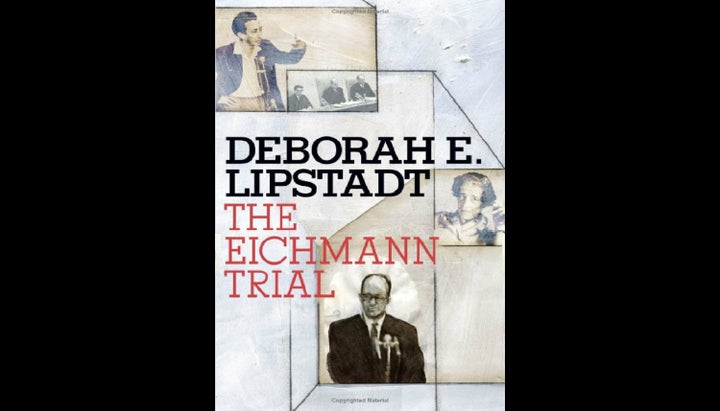
By A. James Rudin
Religion News Service
(RNS) When asked to name two famous trials that took place in Jerusalem, most people quickly mention the trial of Jesus nearly 2,000 years ago. They typically get tripped up, though, on the second one.
Enter Emory University professor Deborah Lipstadt's recent book, "The Eichmann Trial," an analysis of the lasting legacy of the trial of Adolf Eichmann in an Israeli court a half-century ago.
Eichmann, a lieutenant colonel in Hitler's dreaded SS organization, was the principal logistical military officer in charge of carrying out the Nazi "Final Solution" -- the mass murder of 6 million Jews.
After World War II ended in 1945, Eichmann escaped from an Allied prisoner camp in Germany and found safe haven in Argentina. Because of Eichmann's record of crimes against humanity, he was sought as a war criminal by several nations.
To escape detection, Eichmann lived near Buenos Aires with his family under an alias and worked in a Mercedes-Benz factory. Lipstadt notes that Argentine strongman Juan Peron's security police were aware of Eichmann's presence in the country, but he was never arrested.
However, in 1960, agents of the Israel government captured and transported him to Israel where he was put on public trial for war crimes that included genocide. An efficient administrator who was personally proud of his lethal work, he left a long paper trial that was used as evidence against him.
The Eichmann trial, begun in April 1961, was widely reported and was one of the first televised trials. For many people around the world, it was their first education -- their first fundamental knowledge -- about the mass murders that came to be known as the Holocaust.
As a security safeguard during his 16-week trial, Eichmann was placed in a bulletproof glass booth. Israeli Prime Minister David Ben-Gurion wanted a full and fair public trial that would not only prove Eichmann's guilt, but would also detail the origin and method of the brutal campaign against Jews, Gypsies, homosexuals and political enemies of the Nazi regime.
Three highly respected German-speaking Israeli judges presided at the trial. Testifying under oath and represented by a prominent German defense attorney, Eichmann admitted to most of the charges regarding his leadership and active participation in the systematic effort that sent millions of Jews to their deaths. However, he claimed he was only a cog in a large bureaucratic machine, and was powerless to resist orders from superiors.
Lipstadt notes the most striking feature of the Eichmann trial was the sworn testimony of more than 100 Holocaust survivors. The Nuremberg war crimes trial conducted immediately after World War II had focused on major Nazi leaders -- the victimizers, not their victims.
The Eichmann trial was different. The survivors' personal stories played a decisive role in educating the world about the radical evil of Nazism.
Lipstadt concludes her study with a devastating attack on the writings of Hannah Arendt, the German Jewish political philosopher who died in 1975. In a controversial book, Arendt described Eichmann as merely an example of the "banality of evil." Arendt also accused European Jewish leaders of complicity with their Nazi killers.
Lipstadt writes: "The leaders were not collaborators ... they had no cards to play. They lacked the power to halt the Nazis' resolute determination to murder Jews."
Eichmann was convicted on all 15 counts against him. In April 1962, at age 56, Eichmann was hanged, his body cremated, and the ashes scattered in the Mediterranean Sea to prevent his burial place from becoming a Nazi shrine. Even Arendt supported the death penalty.
Eichmann's execution remains the first and only act of capital punishment carried out by Israel since it achieved independence in 1948.
(Rabbi Rudin, the American Jewish Committee's senior interreligious adviser, is the author of "Christians & Jews, Faith to Faith: Tragic History, Promising Present, Fragile Future.")